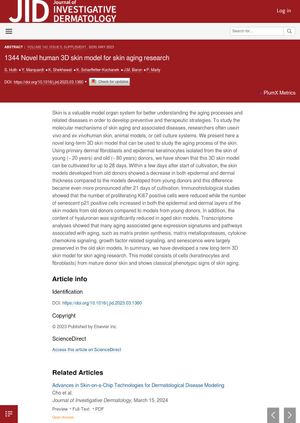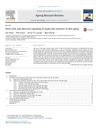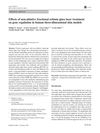Novel Human 3D Skin Model for Skin Aging Research
April 2023
in “
Journal of Investigative Dermatology
”

TLDR Scientists created a 3D skin model that shows typical signs of aging, which can help in aging research.
Researchers from the Department of Dermatology and Allergology at Rheinisch-Westfalische Technische Hochschule Aachen and the Aging Research Center at Universitat Ulm have developed a novel long-term 3D skin model to study the aging process of the skin. The model, cultivated for up to 28 days, uses primary dermal fibroblasts and epidermal keratinocytes isolated from the skin of young (~20 years) and old (~80 years) donors. The skin models from older donors showed a decrease in both epidermal and dermal thickness, a reduction in proliferating Ki67 positive cells, an increase in senescent p21 positive cells, and a significant reduction in hyaluronan content compared to models from younger donors. Transcriptome analyses revealed that aging-associated gene expression signatures and pathways were largely preserved in the old skin models. This model shows classical phenotypic signs of skin aging and could be a valuable tool for skin aging research.




